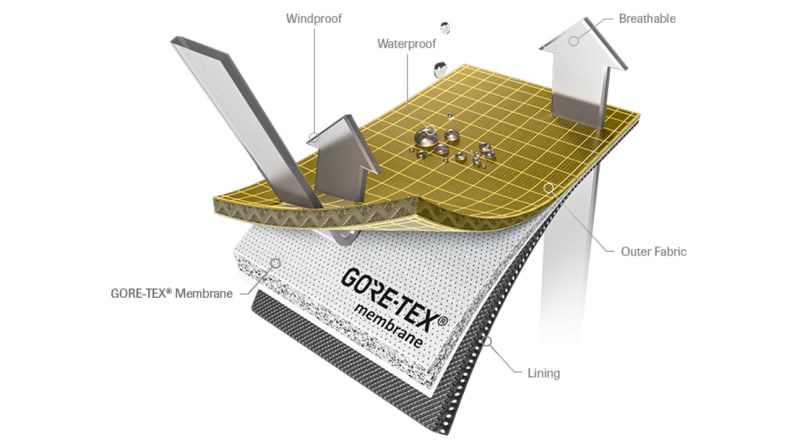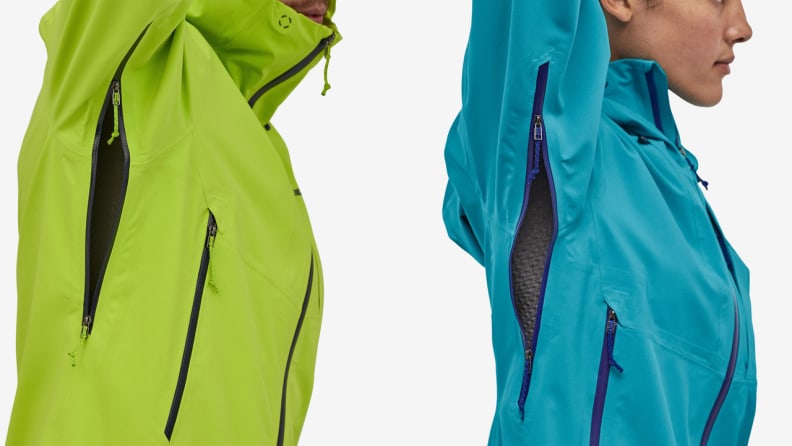Is investing in a Gore-Tex jacket worth it?
There's more to staying dry in wet weather than you might think.
 Credit:
PixaBay
Credit:
PixaBay
Products are chosen independently by our editors. Purchases made through our links may earn us a commission.
In most parts of Canada, there’s a good chunk of the year when a waterproof shell jacket can make your life a lot more comfortable, no matter whether you’re running errands around town or taking on a multi-day trek in the backcountry. A good shell can be lightweight and breathable enough to wear on its own in wet weather during warmer months, and, when the temperature drops, be worn over a mid-and-base layer to keep cold winds and precipitation at bay.
If you’ve done any shopping for a shell jacket, however, you’ve probably noticed that there is a big range in cost. A basic rain jacket can cost under $100, while high-end, high-tech shells can run upwards of $1,000. While many factors account for the huge differences in price, the main one is the waterproof membrane fabric that’s at the heart of each shell.
The one brand name membrane fabric that everyone knows is Gore-Tex. In addition to being the best-known membrane fabric out there, it’s also the most expensive. Many Gore-Tex shells start at around $500. Some, like Arc'teryx’s top-end Alpha SV jacket (men’s/women’s), are near the $1,000 mark.
What is Gore-Tex?

creating a waterproof-breathable membrane fabric is a complicated business.
Gore-Tex has been around for more than 50 years and has been improved upon over that time, but the basic principle of the material remains the same. As the company behind the fabric explains, the membrane is filled with billions of tiny pores per square inch, which are small enough to keep water droplets out, but big enough to let water vapor escape. This lets the fabric remain breathable, even when you’re working up a sweat, and works to make it windproof as well as waterproof.
Kristin Nelson, Director of Merchandise for Mountain Equipment Co-op, explained to us that you can “think of a rain jacket as a sandwich of fabric layers. The fabrics are made of layers bonded together to form one textile," she says, “typically, two-layer, 2.5-layer or three-layer construction.” The materials used for those layers can vary from one shell jacket to another, which can make for big differences in weight and packability, not to mention the price. That makes it important to “choose the right ones for your activities,” Nelson says.
According to Nelson, a two-layer shell is the most basic and affordable type of Gore-Tex shell available—the Arc’teryx Solano (men’s/women’s is one slightly more premium example. They can be great as a casual rain jacket for wearing around town, or potentially some outdoor activities like downhill skiing. The two-layer construction consists of a waterproof-breathable membrane that is laminated to the outer fabric to act as a single layer, Nelson explains, while a mesh or fabric lining is stitched into the jacket. “two-layer jackets are very durable and the sewn-in liners are really comfortable,” Nelson says, but “they are are usually heavier and bulkier than other types of jackets due to their comfy liners.”
2.5-layer Gore-Tex shells, like the Marmot Minimalist (men’s / women’s, are perhaps the most confusing of the lot, since you can’t really have a half layer of fabric. As Nelson explains, the “half” layer is actually a thin coating with a raised print that’s applied to the inside of the membrane. That means they are “usually very lightweight and packable since there’s no inner liner,” Nelson says. She also notes, however, that “some people think the coating can feel sticky against their skin,” and that “the thin coating is not as durable as a fabric liner, so the overall lifetime of a 2.5-layer jacket will be shorter than other types of rain jackets.” That can make them great for travelling, she says, or as a more compact jacket for hiking, mountaineering, or cycling.
The most premium Gore-Tex option are shells with a three-layer construction, which Nelson says “actually feel like they’re made with just one layer.” This, she explains, is because all three layers—the outer fabric, membrane, and liner— are bonded together, “so they feel like one piece of fabric.” That makes them more durable and more breathable than other types of construction. According to Nelson, they are lighter and more packable than a two-layer jacket, but a bit heavier and less packable than 2.5-layer jackets.” If you’re willing to pay the premium, Nelson says they’re an excellent choice for anyone spending a ton of time outdoors, whether you’re hiking, biking, or backcountry skiing. MEC’s Synergy jackets for men and women are one example.
Non-Gore-Tex Options
Gore-Tex may be the biggest name around, but it’s far from the only option when it comes to waterproof, breathable membrane fabrics. Some clothing makers like The North Face and Outdoor Research, have developed their own membrane technology, while others rely on membrane fabrics developed by third parties. MEC’s Nelson singles out Pertex Shield, which is used in some of MEC’s own shells like its Aquanator rain jackets, as one example. As she notes, however, there are also plenty of unbranded membrane options used by various companies that can make for a more budget-friendly option.

While Patagonia's Galvanized jacket is already breathable, its built-in pit zips help to shed additional heat on-the-go.
They rely on the same principles of membrane technology as Gore-Tex but can vary in effectiveness. Some, like The North Face’s FutureLight fabric, as seen in their Dryzzle jackets (men/women can go toe-to-toe with Gore-Tex, but they also demand a similar premium, while others can be considerably more affordable. Outdoor enthusist sites OutdoorGearLab and Switchback Travel, single out Outdoor Research’s Interstellar jacket (men’s/women’s, which uses the company's own AscentShell technology, as their top budget hardshell jacket. Patagonia’s own H2No membrane technology used in jackets like its Galvanized shell (men’s/women’s, and Columbia’s Omni-Tech fabric used in many of its products, including the men’s Watertight II and women’s Arcadia II, are some other more affordable alternatives to Gore-Tex that consistently get high marks from customers.
The Bottom Line
Whatever option you choose, a shell that uses a membrane of any type is a major step up from the most basic and inexpensive rain jackets that do not. Those might do a decent job of keeping the rain out, but they offer little breathability and will inevitably end up sticking to your skin if you work up the least bit of sweat. When it comes to membrane technology, you generally do get what you pay for when you invest in a shell jacket, but there can be a case of diminishing returns—where you’re paying a big increase in price for a comparatively smaller increase in performance. That may well be worth it if you’re regularly pushing yourself to the limit in extreme conditions. But for casual or light outdoor use, a shell that balances price and performance will likely be a better choice for most people.


